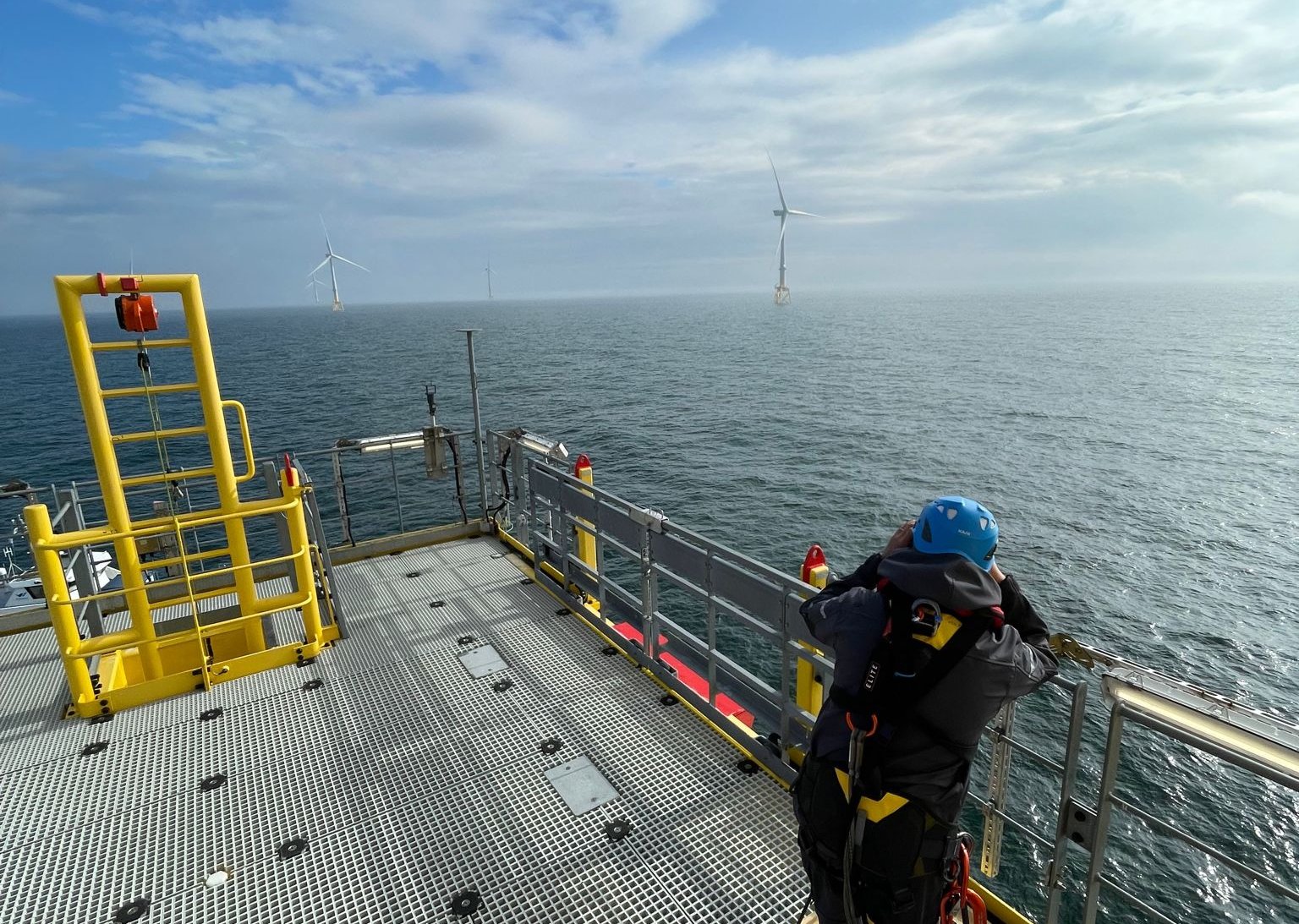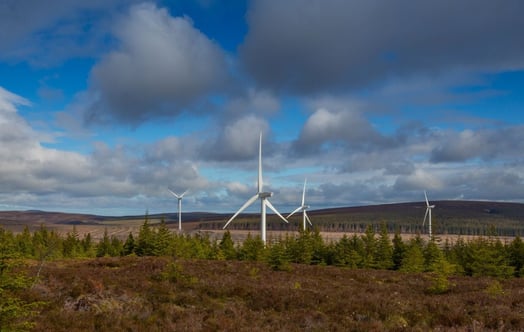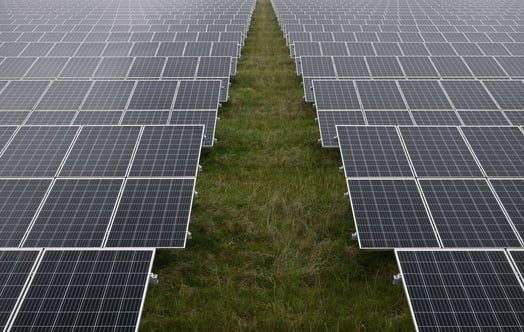
AI-powered trial proves promising for monitoring birds at offshore wind farms
- The British Trust for Ornithology (BTO) has published a report evaluating the effectiveness of AI camera systems for tracking bird activity at wind farms.
- Findings show that Spoor’s mono and stereo-vision systems help to understand how wind farms affect bird activity and movement.
- The report’s findings are from trials carried out at Vattenfall’s Aberdeen Bay Offshore Wind Farm.
Monitoring the movement of birds around wind farms is essential for minimising risks to wildlife. Through monitoring, we can understand bird activity in and around turbines, which can inform the strategies we use to protect birds at our sites.
Spoor, Vattenfall and the British Trust of Ornithology partnered to carry out a trial of AI-powered vision systems to monitor bird movement at Vattenfall’s wind farm off the coast of Aberdeen.
The study, a combination of theoretical assessments and field trials, evaluated how two different camera systems and Spoor’s video processing software detected birds and their movements around wind turbines.
The trial compared two different camera systems; standard mono-vision and stereo-vision. Compared to the mono-vision system, which estimates bird distances based on assumed bird sizes, the stereo-vision system delivered more accurate distance measurements as it used two cameras to triangulate distances, similar to human depth perception. This means that the size of the bird is more accurately assessed, and therefore its movements recorded more precisely.
This level of detail provided by the stereo-vision system could allow wind farm operators to document ‘micro-avoidance behavior’. Micro-avoidance behaviour of birds at wind farms refers to the last-minute flight adjustments birds make to avoid colliding with the rotor blades of turbines. This behaviour is part of a broader spectrum of avoidance strategies that birds employ when navigating through or near wind farms.
This monitoring could help us to better understand the collision risk of birds at wind farms, which can then inform mitigation strategies, the steps developers and operators of wind farms can take to reduce the risk of birds colliding with wind turbines.

Field ornithologist collecting laser rangefinder data at Aberdeen wind farm for comparison with the Spoor outputs.
The system has the ability to run nonstop and for an indefinite length of time, which means monitoring can be carried out continuously both on and offshore. The report also validates Spoor’s ability to estimate bird flux – the rate at which birds pass through a monitored section of airspace. This data is key to modelling the level of collision risk.
Philipp Boersch-Supan, Principal Ecological Statistician at the British Trust of Ornithology said:
“Mitigating risks associated with bird collisions at wind turbines is crucial for ensuring a nature-positive transition to clean energy, and robust and scalable monitoring inside operating wind farms is needed for this.
“Spoor’s lightweight systems promise to be a very valuable addition to the monitoring toolkit, and we applaud their open and transparent approach to system evaluation and validation, which provides a foundation for good environmental decisions.”
Jesper Kyed Larsen, Bioscience expert and Environmental Research &Development coordinator at Vattenfall Wind said:
“It’s been a great pleasure working with Spoor and BTO to learn about the performance and potentials of this exciting technology. We need to understand seabird interactions with offshore wind turbines in greater detail to improve the evidence base for collision risk assessments and in turn decisions on mitigation measures.”
“I am very grateful for the time and valuable input provided by the panel of experts from JNCC, Marine Directorate, NatureScot and RSPB in the course of the study”.
Ask Helseth, CEO at Spoor said:
“Collaborating with BTO and Vattenfall on this offshore trial has been a valuable step in advancing evidence-based biodiversity monitoring. The findings highlight the potential of AI-powered camera based systems to deliver high-quality bird movement data at scale—supporting better decisions in offshore wind development and environmental stewardship alike.”
Key Findings
-
Stereo-Vision Superiority: The report highlights that stereo-vision systems generally provide more accurate measurements of bird trajectories than mono-vision systems, particularly at longer ranges. This level of precision supports documentation of micro-avoidance behaviour and helps reduce uncertainty in collision risk modelling.
-
Body Size Variation Impact: The study found that variations in seabird and raptor body sizes significantly affect measurement accuracy in mono-vision systems. Capturing accurate biometric data—such as wingspan and body length—is essential for reliable image-based monitoring and for informing turbine-specific mitigation strategies.
-
Field Trials: Onshore and offshore trials confirmed that stereo-vision systems outperformed mono-vision systems in reconstructing 3D bird flight paths. While mono-vision systems showed greater distance error (especially along the depth axis), they still provided adequate spatial estimates to inform planning, risk screening, and permitting processes.
-
Flux and Statistical Modelling: A statistical model was developed using data collected from Spoor’s systems to estimate bird density, movement, and flight height distributions. The ability to track large numbers of birds enabled robust flux estimates—critical inputs for evidence-based EIAs and operational impact assessments.
You can read the full report, including recommendations, here.
About the British Trust for Ornithology
BTO are a non-governmental, non-campaigning organisation focused on securing the future for birds and nature.
They use science, monitoring and data to inform good environmental decisions and inspire others with the wonder of birds. The heart of BTO encompasses three key areas: Birds, Science, People.
About Spoor
Spoor is a Norwegian technology company developing AI-powered software to detect, track, and classify bird activity around wind farms. Using computer vision and machine learning, Spoor delivers high-resolution data to support environmental impact assessments, operational monitoring, and collision risk modelling.
The technology enables scalable, automated biodiversity monitoring across both pre- and post-construction stages—helping developers reduce uncertainty, meet permitting requirements, and align renewable energy growth with wildlife conservation.
About Vattenfall
Vattenfall is a leading European energy company that works to enable the fossil freedom that drives society forward. Vattenfall is committed to building a future where everyone can choose fossil free ways to move, make and live. They employ approximately 20,000 people, have around 14 million customers and operate mainly in Sweden, Germany, the Netherlands, Denmark and the UK.
Vattenfall has been in the UK for more than 15 years and is a key partner in enabling the UK to reach net zero. Their work in the UK includes low-carbon heating, on and offshore wind energy, solar and battery projects, electricity networks and delivering fossil free electricity to businesses through power purchase agreements. In the UK Vattenfall operate 13 battery storage, onshore and offshore wind projects with an installed capacity of 1.1 gigawatts. Each year these projects combined can power 800,000 homes. Vattenfall maintain a strong and growing wind portfolio, with over 3 gigawatts in operation and development. Find out more about Vattenfall here.



